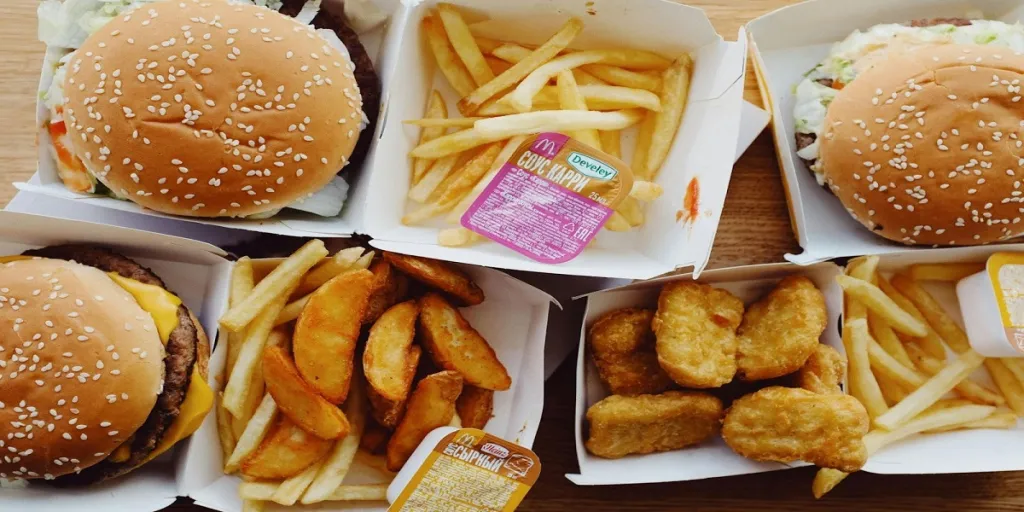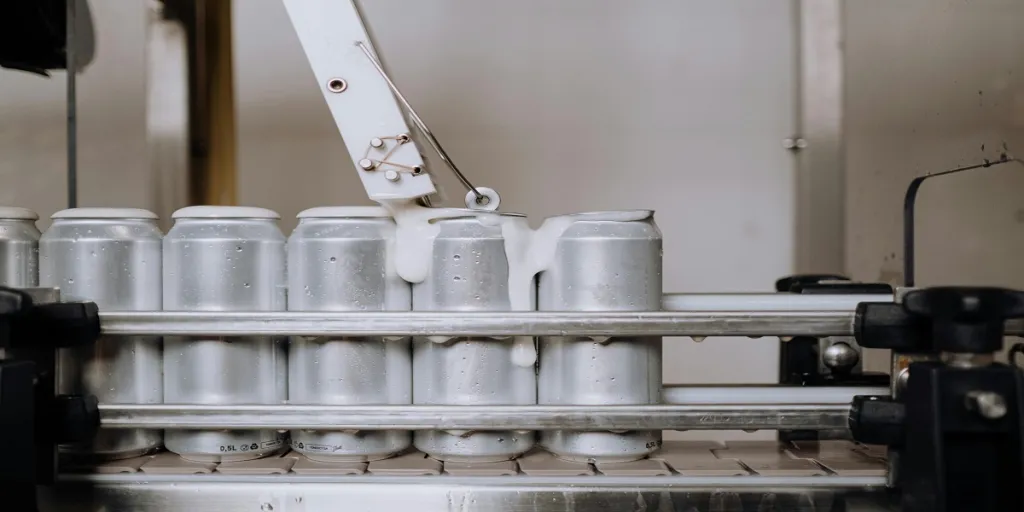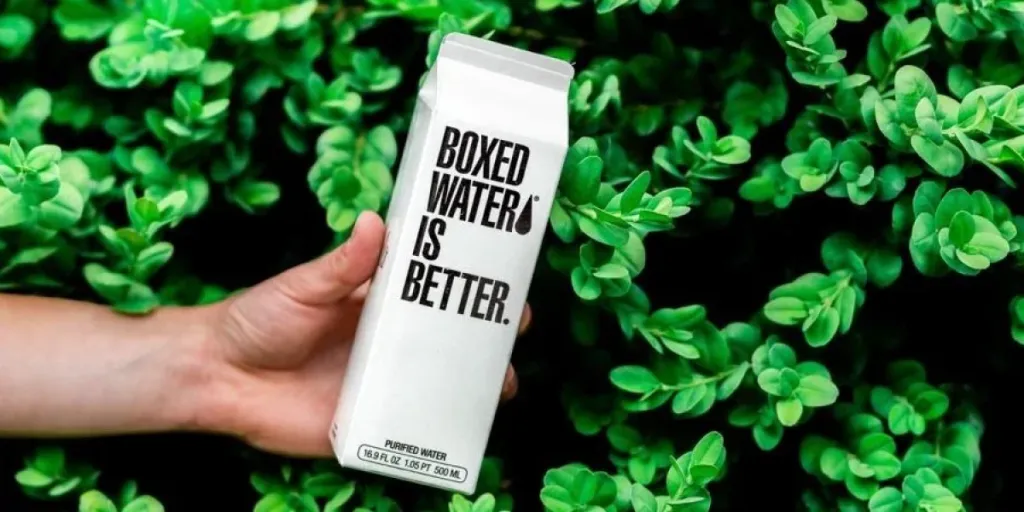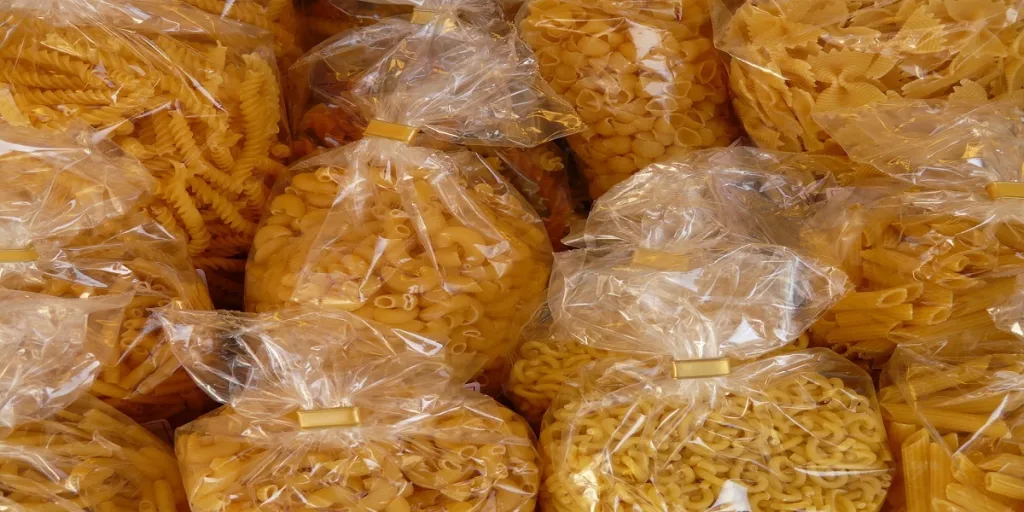Many people have experienced a phase during their youth when fast food becomes the default choice for almost every meal. This habit has persisted for many into their adult life. Recent research on fast food habits reveals that about 2 in 3 (around 65%) of survey participants admitted to eating fast food at least once a week. It’s precisely these eating habits that shape the fast food culture in today’s modern world.
Continue reading to explore the essential requirements of effective fast food packaging amid such a widely embraced fast food culture, including a global market overview and some fast food packaging ideas poised for growth and expansion this year.
Table of Contents
Fast food packaging market overview
Effective fast food packaging essentials
Fast food packaging ideas set to grow
A fresh serving
Fast food packaging market overview

To gain insight into the global fast food packaging market’s current size, it’s essential to consider the global fast food market size. In 2020, the industry was valued at US$ 862.05 billion, with North America holding the largest market share of US$ 337.8 billion. It’s anticipated to grow to US$ 1,467.04 billion by 2028, at a compound annual growth rate (CAGR) of 6.05% from 2021 to 2028.
Simultaneously, the global markets for fast food containers and bags are witnessing similar encouraging growth trends. The market size for fast food containers is expected to increase from the estimated US$ 50.45 billion in 2023 to US$ 84.56 billion by 2033, at a CAGR of 5.3%. Meanwhile, the fast food bag market is forecasted to reach approximately US$ 486.0 million in 2024 and is projected to grow at a CAGR of 5.5% from 2024 to 2034, eventually reaching about US$ 830.2 million by the end of this period.
In short, the fast food packaging market demonstrates significant growth potential, closely mirroring the expansion seen in the broader fast food industry. With the global fast food market’s steady rise and the increasing demand for more innovative packaging solutions, the fast food packaging sector stands as a vital component of this growth.
Effective fast food packaging essentials
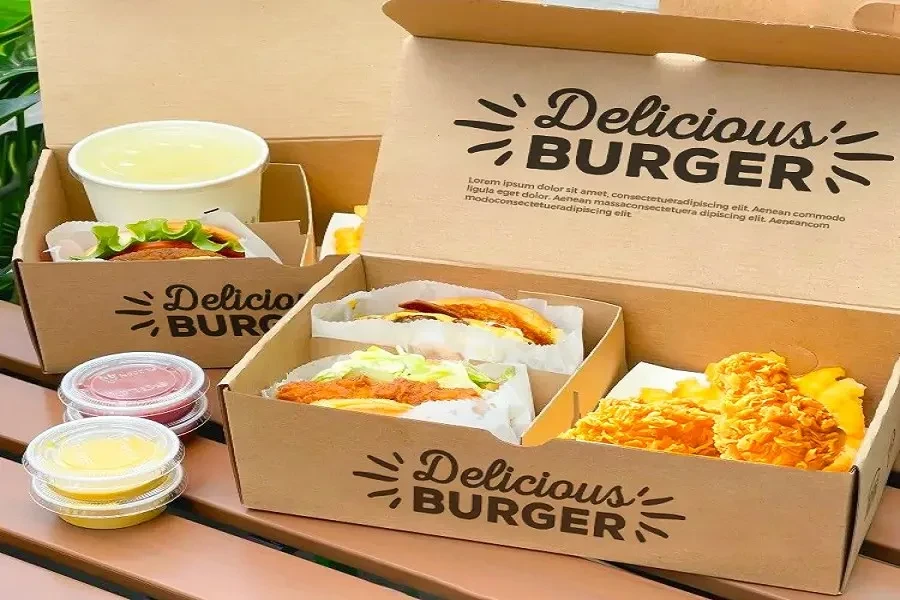
- Enhancing convenience: The most distinctive feature of fast food packaging, compared to other types of food packaging, is its ability to keep the food served “fast”—that is, convenient and portable, as expected. This aspect, while often overlooked, is in fact crucial in facilitating easy transport and consumption on the move or in confined spaces, aiming to provide consumers with convenience in their busy lives. Essentially all about easy-to-carry and bring around, such an attribute is a vital element for the fast food world where speed and ease offered are highly valued.
- Preserving unique flavors: Maintaining distinct flavor and quality while ensuring freshness is another hallmark of the fast food industry, setting it apart from standard food packaging. Fast food packaging must safeguard the authentic unique flavor and quality of the meals, as this is the essence of nearly every fast food brand, given the intensely competitive market and the unique selling proposition emphasized by each. The packaging should also aim to prolong the shelf life of the food, ensuring that patrons receive the freshest possible offerings within the packaging.
- Establishing brand recognition and marketing: Regardless of the product type, packaging often acts as the initial point of contact with consumers, thereby playing a critical role in branding. It effectively encapsulates the product’s identity, values, and unique selling points. In terms of fast food packaging, the significance of this attribute can be remarkably amplified, considering its typically younger target audience.
This demographic, according to studies, demonstrates a notably higher correlation between fast food advertising and increased fast food consumption and brand preference. Research published in 2023 on fast food marketing’s effect on consumption and brand loyalty among 10 to 17-year-olds across six diverse nations clearly illustrated this connection. The findings indicate that marketing aimed at specific brands greatly boosts the likelihood of what young individuals will prefer and consume.
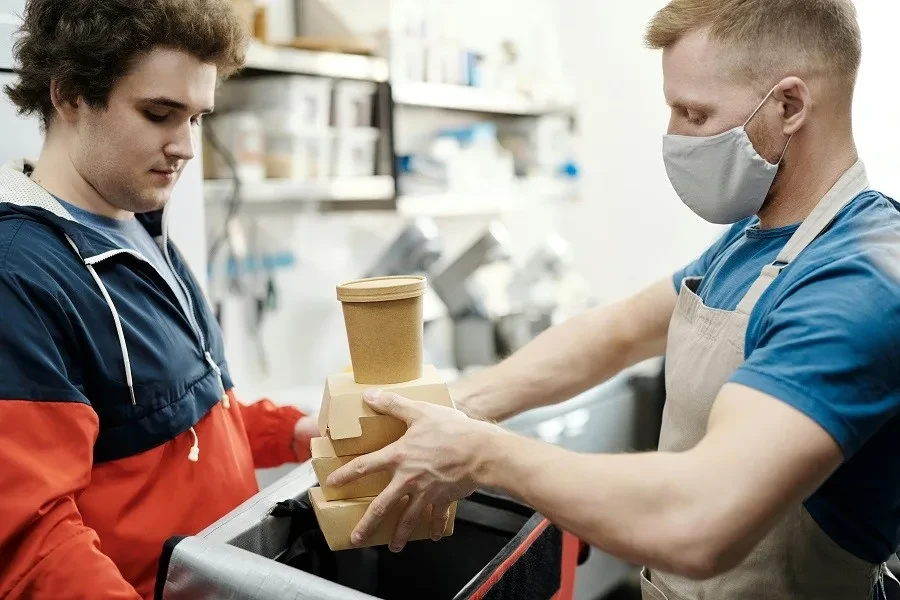
- Fast food-grade packaging: While it’s true that standard food-grade packaging suffices for many applications, fast food packaging requires additional quality enhancements tailored to its unique needs. Primarily, the packaging must excel in heat preservation and offer leak-proof capabilities. Since many fast foods are prepared with high-temperature hot oil, it’s crucial for the packaging to maintain temperature without the risk of leaks. When subjected to high temperatures, certain plastics, for instance, can degrade, potentially releasing harmful substances. Hence, evaluating the heat resilience of fast-food packaging is essential.
On top of these, packaging that is resistant to squeezing and deformation can compromise the integrity of fast food items like sandwiches and fried foods, even if the materials are deemed food-grade. PET (Polyethylene Terephthalate) plastic, commonly utilized for bottles and containers for various drinks, for example, may not be the optimal choice for fast food packaging due to its characteristics under heat and pressure. In essence, fast food packaging must be more than just food-grade; it needs to ensure food safety by meeting the specific thermal requirements of fast food, considering the critical distinctions between food-grade and food-safe criteria.
Fast food packaging ideas set to grow
Smart packaging

Smart packaging has been revolutionizing food packaging, involving technologies such as QR codes, NFC tags, temperature-sensitive inks, and IoT (Internet of Things). Smart packaging offers a plethora of benefits, from providing nutritional information and freshness alerts to enhancing customer experience and engagement while also improving food safety.
Examples of smart fast food packaging include interactive packaging such as QR codes that offer nutritional information, engage customers with brand stories and promotional info, or provide interactive content such as games or promotions. Intelligent packaging and active packaging are the two specialized subsets of smart packaging technologies that are often associated with food and beverage packaging.
The primary difference between smart packaging in the general food sector and the fast food sector lies in application and focus. While intelligent and active packaging for the general food sector is designed for extending shelf life, enhancing safety, and providing product info, in fast food, the focus shifts towards speed, convenience, and real-time condition monitoring of food. All of these alongside facilitating immediate consumer interactions for enhanced satisfaction.
More specifically, active packaging interacts directly with the contents to mitigate undesired gasses from sealed packages, helping to prevent spoilage. This approach might also use sensors for spoilage detection and alerts. The elements used in active packaging depend on the product and its requirements, from oxygen and moisture removal to ethylene control and antimicrobial coatings, offering a broad selection for market application.
In the fast food landscape, active packaging can help to ensure products stay fresher for longer while removing any unwanted odors. Fast food packaging examples employing active technologies include pizza boxes with incorporated moisture absorbers to keep the crust crispy, sandwich wrappers with oxygen scavengers to maintain freshness during delivery, and salad containers with ethylene scavengers to keep the greens crisp and fresh.
In general, the active packaging market is poised for growth, reflecting its expanding role in the food and beverage sector, including fast food. Market data predicts the value of the active and intelligent packaging market to hit US$ 14.48 billion in 2024, with a projected increase to US$ 19.89 billion by 2029, growing at a CAGR of 6.55% during this five-year period.
Sustainable packaging

The advocacy for sustainable packaging in the fast food industry is not a recent development, particularly given the global climate challenges underscored by the record temperatures experienced in the past year. While sustainable packaging across various food sectors often highlights recyclable or biodegradable materials, the approach within fast food packaging is somewhat different. Even though sustainable materials are equally prioritized in fast food packaging, the historical reliance on paper and cardboard as standard materials—stemming from an era when branded packaging strategies were less developed among the earlier development of fast food establishments—has left a lasting impact.
Tradition and environmental advocacy aside, there are indeed tangible benefits to choosing paper over plastic in the fast-food sector. Paper packaging for fast food excels in preventing food from becoming soggy or oily, thanks to its superior absorption of water vapor and grease from hot food, a property less efficiently managed by plastic. Even better, when it comes to paper bags, paper boxes, or cardboard boxes, fast food patrons tend to repurpose them as makeshift plates, demonstrating the versatility and utility of these packaging beyond merely containing food.
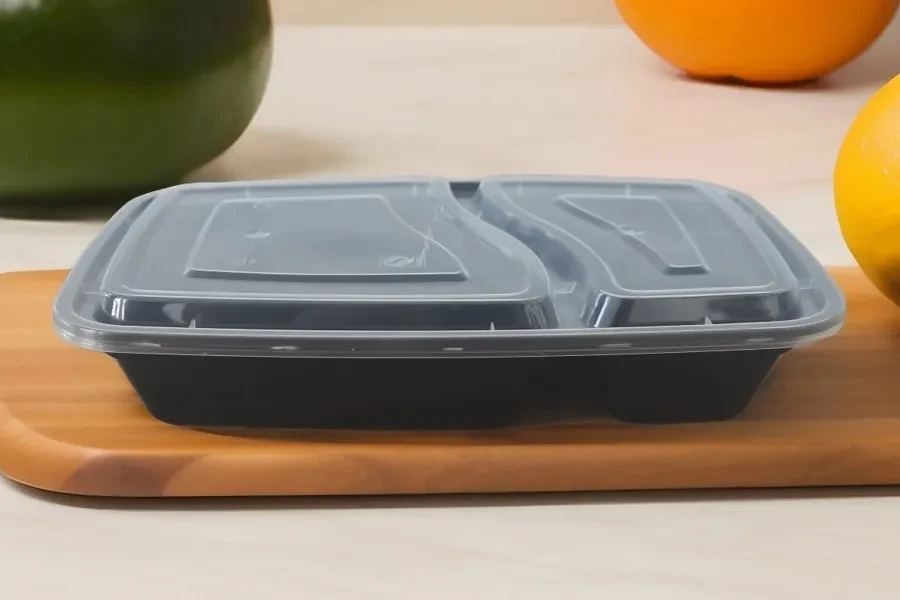
However, despite the sustainability of these materials, they are predominantly single-use, even for dine-in scenarios. Hence, a significant movement in sustainable fast-food packaging today involves not just minimizing single-use options but promoting reusable alternatives. Reusable packaging is designed for numerous uses over its lifecycle. Fast-food reusables including cups, boxes, containers, and bottles are typically made from durable and eco-friendly materials like glass, metal, wood, or even some biodegradable plastics. Glass bottles, metal containers, and biodegradable plastic cups are some of the most commonly found reusable options.
The growing traction for reusable food packaging is accentuated by optimistic industry forecasts. Predictions suggest that the global market for reusable fast food packaging may expand at a CAGR of 10.2% from 2023 to 2030, potentially elevating its value from US$ 17.21 billion to around US$ 33.96 billion by the end of this period.
It’s important to note that while the concept of reusable fast food packaging is gaining momentum, especially among some fast food giants, its widespread adoption is not without hurdles. Fast food establishments must navigate logistical issues, higher upfront expenses, hygiene and food safety concerns, as well as consumer acceptance to successfully implement reusable packaging on a large scale. For instance, a 2021 survey among fast food customers in the United States showed that 55% preferred compostable packaging due to worries about the cleanliness of reusable options and concerns over additional costs associated with participating in reusable packaging programs, cited by 48% of respondents.
In essence, reusable packaging for fast food focuses on the environmental advantages of this green packaging approach, including significant waste reduction, resource conservation, and diminished carbon footprints owing to lowered production and disposal requirements.
Edible packaging
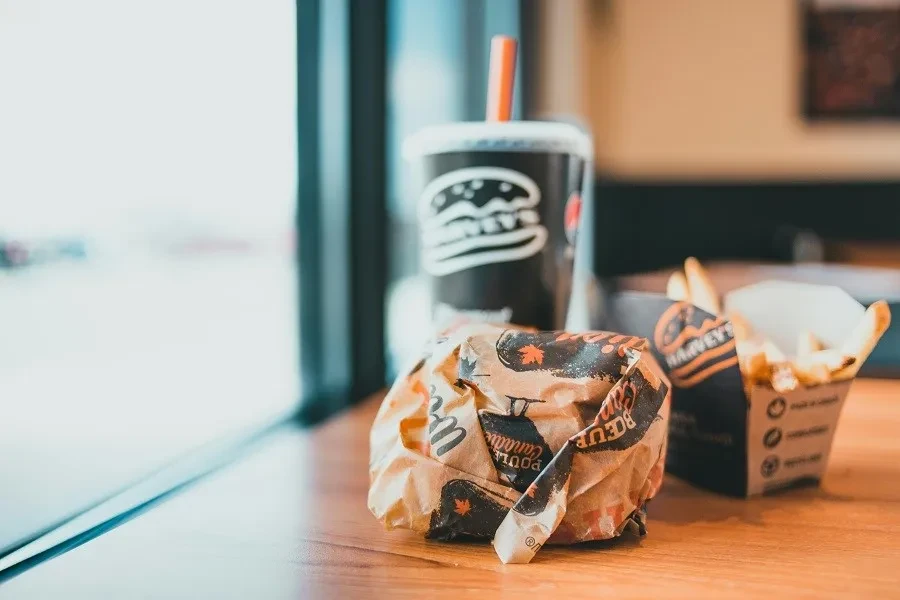
One of the most recognized sustainable packaging materials comes in the form of biodegradable options. However, regardless of the type of biodegradable fast food packaging, it’s widely accepted that the degradation process can span from a few weeks to several months, considering factors like environmental conditions and material composition. Such a rather slow degradation pace paves the way for edible packaging to emerge as a sustainable alternative.
Edible packaging can be consumed almost immediately alongside food and drinks, making it particularly appealing in the fast food industry as an innovative method to reduce the significant amount of single-use waste and enhance the consumer experience. Notable examples of edible food packaging include hard cookie coffee cups, sweet gelatin packaging, collagen casings, and candy wrappers made from potato starch or rice paper.
It’s worth noting that the concept of edible packaging not only isn’t novel but dates back centuries, with practices such as wax coating on fruits for preservation seen as early as the 12th century in China. In the modern context, with rising concerns over global warming and environmental sustainability, innovative edible packaging materials are not only functional but add an element of fun. The capacity for packaging to be edible often introduces joy and surprise into the dining experience, aligning with the predominant marketing and promotional theme among fast food operators: facilitating meals filled with joy.
Recent advancements include the potential integration of edible packaging with active and intelligent packaging solutions. These innovations interact with the food product to extend its shelf life, enhance food safety, or provide consumer information, marking a technological advancement in how edible packaging may be further developed and optimized. The growing interest in edible packaging is driven by increased consumer focus on sustainability, health, food safety, and waste reduction, reflecting a shift towards more eco-friendly packaging solutions.
The significance of edible packaging is reflected in its growth potential, as more entities invest in this solution, its prevalence is expected to rise. The global market for edible packaging has been surging, with its value assessed at just under US$ 1 billion in 2022 and reaching US$ 1.10 billion in 2023 in a separate research. The same research suggests an expansion to US$ 4.18 billion by 2033 at a relatively encouraging CAGR of 14.3%, compared to the overall packaging market.
In a nutshell, the benefits of edible packaging are significant. It helps in reducing the environmental impact and some edible packaging options can even include added nutrients like vitamins or probiotics, contributing to the nutritional value of the meal.
A fresh serving
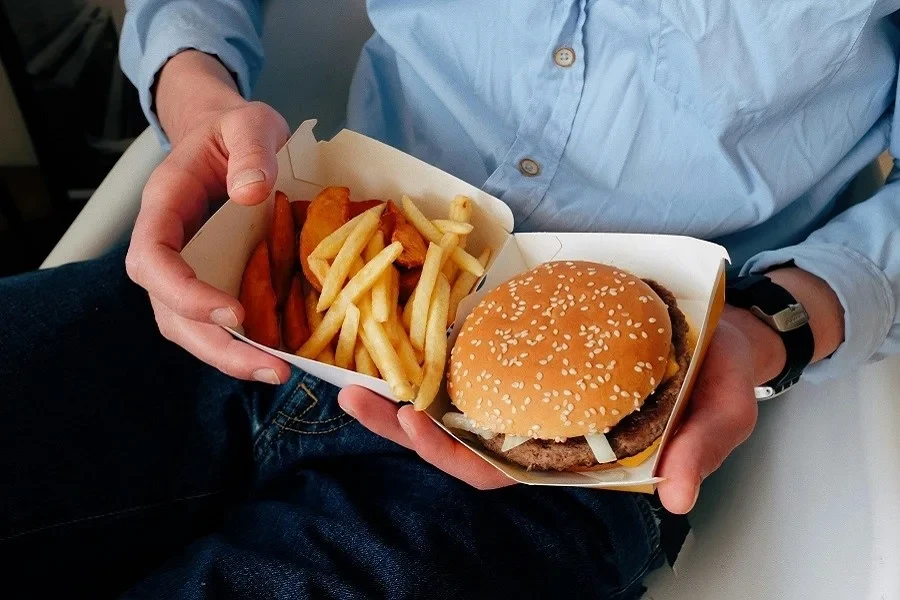
With the fast food industry continuing to grow on an upward trajectory, the anticipation for innovative packaging ideas that embody the principles of sustainability, functionality, and consumer safety is high. The ongoing exploration of smart, sustainable, and edible packaging solutions is poised to redefine and innovate the fast-food packaging landscape. These advancements promise to enhance the fast food experience, reflecting the industry’s dedication to convenience, environmental responsibility, and meeting the dynamic needs of consumers.
For a more in-depth understanding of the world of fast food packaging, visit Alibaba.com Reads regularly to find a wealth of ideas, insights, and the latest updates that keep wholesale businesses ahead of the curve.
